10 Cat-Safe Indoor Plants That Are Easy To Care For
Plus, tips for creating a pet-friendly plant environment.
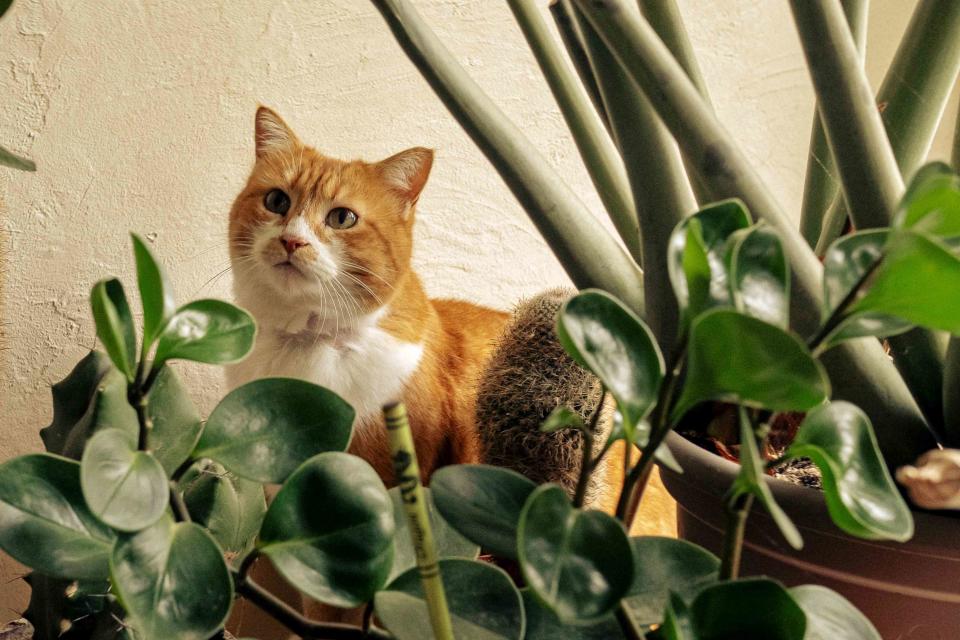
Louise LeGresley/Getty Images
If you’re a cat owner, you know that a cat’s curiosity can lead them into some precarious situations, like eating plants. Choosing cat-safe plants will help your cat stay safe while roaming your home. Plants that are toxic to cats can cause breathing difficulties, retching, and potentially fatal conditions.
“Certain plants are toxic to cats due to specific compounds that can affect their organs, neurological functions, or digestive systems,” says Stacie Atria, a holistic veterinarian with a doctor of veterinary medicine and founder of Lotus Veterinary Alternatives. “For example, lilies contain compounds that can cause kidney failure in cats even in small amounts.”
Opting for cat-safe plants will prevent your cat from experiencing critical health issues and having to take emergency trips to the vet. Try these cat-safe plants recommended by experts to keep your furry feline happy and healthy in your home.
Related: 10 Toxic Houseplants Pet Owners Should Avoid
Popular Cat-Safe Plants
African Violet
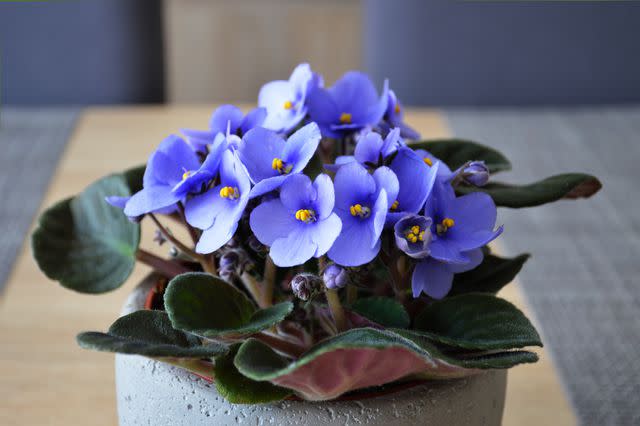
izzzy71/getty images
African violets are popular houseplants that offer brilliantly colored flowers several times a year. They have fuzzy leaves and bright flowers that come in a range of colors. These stunning plants prefer warmth, humidity, and indirect sunlight.
“The African violet enjoys low to moderate light and is safe for cats—perfect for a windowsill that doesn’t get direct sunlight,” Atria says.
Related: 14 Low-Light Houseplants That Can Survive Shady Rooms
Chinese Money Plant
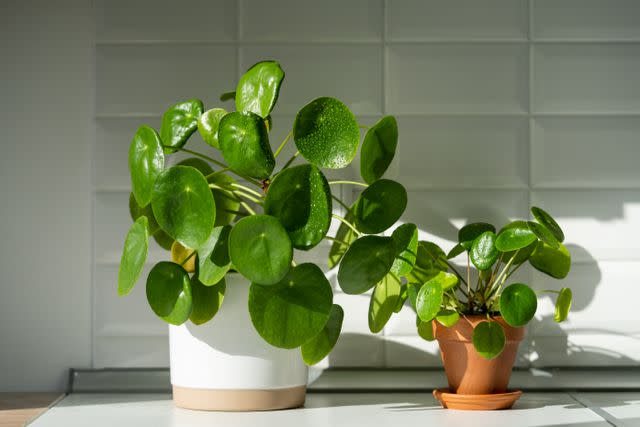
Dima Berlin/Getty Images
“Besides being safe plants for households with curious cats, Chinese money plants (Pilea peperomioides) are also very easy to take care of, even for those who don’t feel they have a green thumb,” says horticulturist and botanical designer Nathan Heinrich.
The Chinese money plant has distinct, coin-shaped, green leaves, making it a popular houseplant choice. It thrives in indirect sunlight and well-draining soil.
“Water when the soil feels slightly dry to the touch, and allow it to drain completely after watering,” Heinrich says. “These plants are slightly drought-tolerant. They like lots of water when they get a drink, but they do not like to be over-watered. If you have a bright window with a bit of shade in the hottest hours of the day, this is the perfect location for your Chinese money plant.”
Related: 40 Drought-Tolerant Plants That Will Improve Your Home's Curb Appeal
Bird’s Nest Fern
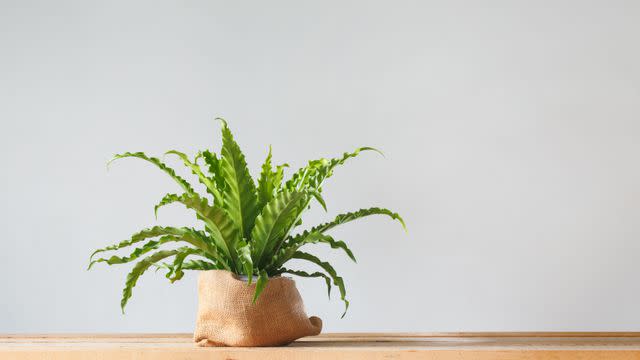
bgton/getty images
The Bird’s nest fern has smooth, bright green fronds and a small size when grown indoors. The cheery, leafy plant needs regular watering when the top inch of soil is dry. The Bird’s nest fern grows well in humid conditions, making it an ideal bathroom plant.
“The Bird’s nest fern thrives in bright, indirect light and consistent humidity, making it a good match for homes with active cats,” Atria says.
Bamboo
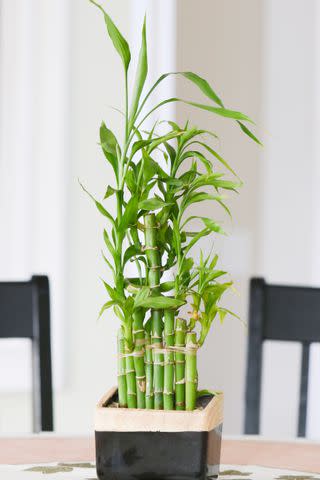
Daniela Duncan/Getty Images
Bamboo is a tall, distinct-looking plant with woody stems that comes in many varieties, from smaller, dwarf types of bamboo to tall varieties that grow 20 feet or more high. To grow bamboo plants indoors, place them somewhere with plenty of sunlight and humidity to thrive.
“Bamboo is generally safe for cats, but ensure you’re planting true bamboo and not look-alikes like Heavenly Bamboo, which is toxic,” Atria says.
Avoid some plants that are called "bamboo" but are technically unrelated. For example, heavenly bamboo is not actually bamboo but a shrub that can be toxic to cats.
Cast Iron Plant

Dima Berlin/Getty Images
Cast iron plants are low-maintenance and cat-friendly. They have deep green, lance-shaped leaves that can grow up to two feet long. They thrive in indirect sunlight, can grow in low-light conditions, and can tolerate irregular watering.
“The cast iron plant is robust, tolerates low light, and is safe from feline destruction,” Atria says.
Related: Learn How to Water Plants With These Helpful Tips for Thriving Greens
Spider Plant
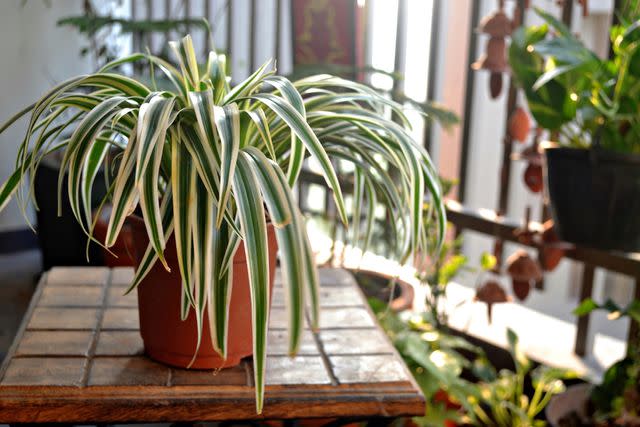
Veena Nair/Getty Images
Spider plants are popular houseplants that are non-toxic to cats. They have slender, arching leaves that grow out from the center of the plant. Spider plants flourish in warm, humid conditions and indirect sunlight.
“The spider plant is non-toxic, thrives in indirect light, and can tolerate occasional munching by curious cats,” Atria says.
Related: 20 Hard-to-Kill Indoor Plants That Don't Need Sunlight to Thrive
Money Tree
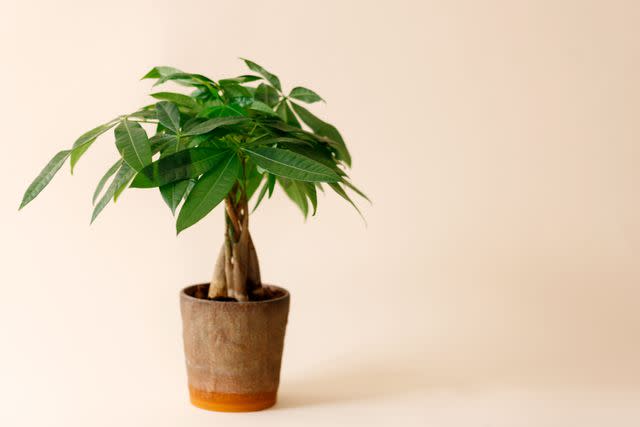
Polina Sergeyeva/Getty Images
“These good fortune plants (Pachira aquatica) often have braided stems and trunks to ‘lock in’ the prosperity they are thought to bring into their household,” Heinrich says. “Water when the soil feels slightly dry to the touch and allow it to drain completely after watering. These plants are slightly drought-tolerant. They like lots of water when they get a drink, but they do not like being over-watered.”
Money trees flourish with indirect sunlight so a bright window with some shade during the hottest time of the day is an ideal location.
Ponytail Palm

Ekaterina Fedulyeva/Getty Images
The ponytail palm is a desert plant with a long, narrow stem and many thin, cascading leaves at the top.
“These plants, which are native to Southeast Mexico, are actually not true palms, despite their name,” Heinrich says. “They’re very drought tolerant and never seem to have a bad hair day. They have a very bulbous trunk that retains water. You could easily get away with watering this plant once a week or even every 10 days.”
Water your ponytail palm sparingly and use well-draining soil. Do not water your plant if the soil feels moist. This desert succulent thrives with plenty of sunshine, so place it in a sunny spot in your home.
Parlor Palm
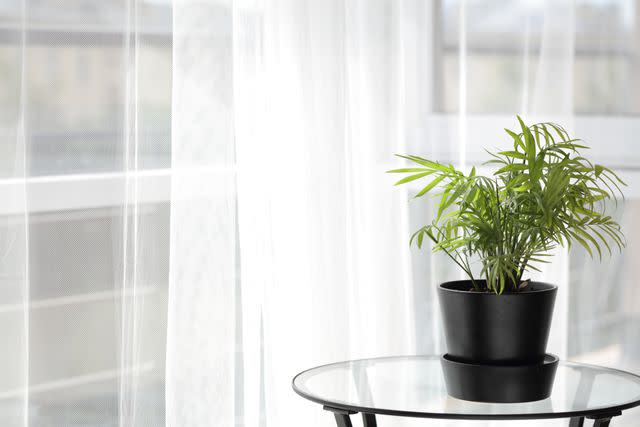
Lilyana Vinogradova/Getty Images
The parlor palm is a tropical plant with long, green fronds. The lush plant thrives in well-draining soil with bright, indirect light. “The palm frond is low-maintenance and cat-safe, best placed in bright, indirect light,” Atria says.
Related: 25 Types of Palm Trees You Can Grow Indoors
Nerve Plant
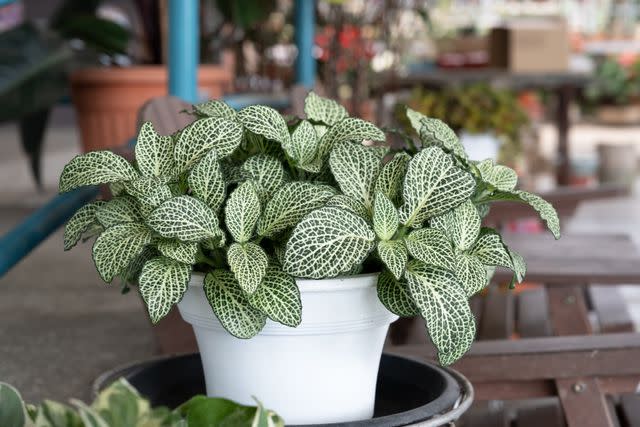
Nora Carol Photography/Getty Images
An evergreen perennial, the nerve plant has ample green leaves and small lines or “nerves” that can range in color from white to red. The slow-growing, cat-safe plant needs moist soil and flourishes in humid conditions.
“The nerve plant needs high humidity and indirect light and is safe for cats but should be placed where they won’t constantly knock it over,” Atria says.
Tips for Creating a Cat-Friendly Plant Environment
Setting up your space with room for your cat to play and explore will help your furry friend stay healthy. Placing plants in vertical spaces out of your cat’s reach will also prevent your cat from eating your plants. Choosing cat-safe plants and monitoring your cats’ behavior around your plants will help you keep your cat safe and healthy.
“Creating a safe and stimulating environment involves using non-toxic plants while ensuring they’re placed strategically,” Atria says. “Elevated plant stands or hanging planters can keep curious cats from chewing on or knocking over plants. Combining cat-safe plants with vertical spaces and scratching posts encourages healthy behaviors.”
Related: 5 Smart Tips for Watering Hanging Plants and Plants on High Shelves
For more Real Simple news, make sure to sign up for our newsletter!
Read the original article on Real Simple.

 Yahoo Lifestyle
Yahoo Lifestyle 
